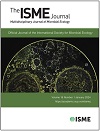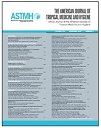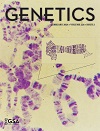Latest Publications
Coordinated transcriptional response to environmental stress by a Synechococcus virus
 Branko Rihtman, Alberto Torcello-Requena, Alvetina Mikhaylina, Richard J Puxty, Martha RJ Clokie, Andrew D Millard, David J Scanlan
Branko Rihtman, Alberto Torcello-Requena, Alvetina Mikhaylina, Richard J Puxty, Martha RJ Clokie, Andrew D Millard, David J Scanlan
Phosphorus (P) is a major abiotic control on the marine cyanobacterium Synechococcus. Some viruses infecting Synechococcus have acquired, from their host, a gene encoding a P substrate binding protein (PstS), thought to improve virus replication under phosphate starvation. Yet, pstS is uncommon amongst cyanobacterial viruses. Thus, we asked how infections with viruses lacking PstS are affected by P scarcity. We show that production of infectious virus particles of such viruses is reduced in low P conditions. Our data shows how phage genomes, lacking obvious P-stress related genes, have evolved to exploit their host’s environmental sensing mechanisms to coordinate their own gene expression in response to resource limitation.
Postintervention Immunological and Entomological Survey of Lymphatic Filariasis in the City of Olinda, Brazil, 2015-2016
 Anita Ramesh, Paula Oliveira, Mary Cameron, Priscila M S Castanha, Thomas Walker, Audrey Lenhart, Lucy Impoinvil, Neal Alexander, Zulma Medeiros, André Sá, Abraham Rocha, Wayner V Souza, Amélia Maciel, Cynthia Braga
Anita Ramesh, Paula Oliveira, Mary Cameron, Priscila M S Castanha, Thomas Walker, Audrey Lenhart, Lucy Impoinvil, Neal Alexander, Zulma Medeiros, André Sá, Abraham Rocha, Wayner V Souza, Amélia Maciel, Cynthia Braga
Lymphatic filariasis (LF) is a leading cause of disability due to infectious disease worldwide. The Recife Metropolitan Region (RMR) is the only remaining focus of LF in Brazil, where the parasite Wuchereria bancrofti is transmitted solely by the mosquito Culex quinquefasciatus. This study reports the results of transmission assessment surveys and molecular xenomonitoring in the city of Olinda, RMR, after nearly 15 years (2015-2016) of interventions for LF elimination. Participants were screened for W. bancrofti antigen via immunochromatographic card tests (ICT), and all 1,170 children from MDA areas and the entire population sample of 990 residents in non-MDA areas were ICT negative. In MDA areas, a total of 3,152 female Cx. quinquefasciatus mosquitoes in 277 households were collected via aspiration. RT-qPCR of 233 pools of mosquitos were negative for W. bancrofti RNA; an independent reference laboratory confirmed these results. These results provide evidence that LF transmission has been halted in this setting.
Unveiling the potential of Daldinia eschscholtzii MFLUCC 19-0629 through bioactivity and bioinformatics studies for enhanced sustainable agriculture production
 Brooks S, Weaver JA, Klomchit A, Alharthi SA, Onlamun T, Nurani R, Vong TK, Alberti F and Greco C
Brooks S, Weaver JA, Klomchit A, Alharthi SA, Onlamun T, Nurani R, Vong TK, Alberti F and Greco C
Endophytic fungi constitute a rich source of secondary metabolites that can be manipulated to produce desirable novel analogs for combating current agricultural challenges for crop production, especially controlling plant disease. The endophytic fungus Daldinia eschscholtzii MFLUCC 19-0629, was newly isolated from tropical ancient plants, Oncosperma sp., and displays a broad-spectrum of antifungal and antibacterial activities against several plant pathogens. The discovery that D. eschscholtzii MFLUCC 19-0629 has a broad spectrum of antimicrobial activity against seven major plant pathogenic microorganisms relevant to crop production and its complete genome sequence carries immense importance in the advancement of novel microbial biocontrol agents (MBCAs). This also unveils the prospect of uncovering new compounds that could be utilized for sustainable agriculture and pharmaceutical purposes.
Peptidoglycan synthesis drives a single population of septal cell wall synthases during division in Bacillus subtilis
 Kevin D. Whitley, James Grimshaw, David M. Roberts, Eleni Karinou, Phillip J. Stansfeld & Seamus Holden
Kevin D. Whitley, James Grimshaw, David M. Roberts, Eleni Karinou, Phillip J. Stansfeld & Seamus Holden
Bacterial cell division requires septal peptidoglycan (sPG) synthesis by the divisome complex. Treadmilling of the essential tubulin homologue FtsZ has been implicated in septal constriction, though its precise role remains unclear. Here we used live-cell single-molecule imaging of the divisome transpeptidase PBP2B to investigate sPG synthesis dynamics in Bacillus subtilis. In contrast to previous models, we observed a single population of processively moving PBP2B molecules whose motion is driven by peptidoglycan synthesis and is not associated with FtsZ treadmilling. However, despite the asynchronous motions of PBP2B and FtsZ, a partial dependence of PBP2B processivity on FtsZ treadmilling was observed. Additionally, through single-molecule counting experiments we provide evidence that the divisome synthesis complex is multimeric. Our results support a model for B. subtilis division where a multimeric synthesis complex follows a single track dependent on sPG synthesis whose activity and dynamics are asynchronous with FtsZ treadmilling.
The contribution of an X chromosome QTL to non-Mendelian inheritance and unequal chromosomal segregation in A. freiburgense
 Talal Al-Yazeedi, Sally Adams, Sophie Tandonnet, Anisa Turner, Jun Kim, Junho Lee, Andre Pires-daSilva
Talal Al-Yazeedi, Sally Adams, Sophie Tandonnet, Anisa Turner, Jun Kim, Junho Lee, Andre Pires-daSilva
Auanema freiburgense is a nematode with males, females, and selfing hermaphrodites. When XO males mate with XX females, they typically produce a low proportion of XO offspring because they eliminate nullo-X spermatids. This occurs because of an unequal distribution of essential cellular organelles during sperm formation. Intriguingly, the interbreeding of two A. freiburgense strains results in hybrid males capable of producing viable nullo-X sperm. Consequently, when these hybrid males mate with females, they yield a high percentage of male offspring. To uncover the genetic basis of nullo-spermatid elimination and X- chromosome drive, we generated a genome assembly for A. freiburgense, and genotyped the intercrossed lines. This analysis identified a Quantitative Trait Locus spanning several X chromosome genes linked to the non-Mendelian inheritance patterns observed in A. freiburgense. This finding provides valuable clues to the underlying factors involved in asymmetric organelle partitioning during male meiotic division and thus non-Mendelian transmission of the X chromosome and sex ratios.
Detection of a historic reservoir of bedaquiline/clofazimine resistance-associated variants in Mycobacterium tuberculosis
 Camus Nimmo, Arturo Torres Ortiz, Cedric C. S. Tan, Juanita Pang, Mislav Acman, James Millard, Nesri Padayatchi, Alison D. Grant, Max O’Donnell, Alex Pym, Ola B. Brynildsrud, Vegard Eldholm, Louis Grandjean, Xavier Didelot, François Balloux & Lucy van Dorp
Camus Nimmo, Arturo Torres Ortiz, Cedric C. S. Tan, Juanita Pang, Mislav Acman, James Millard, Nesri Padayatchi, Alison D. Grant, Max O’Donnell, Alex Pym, Ola B. Brynildsrud, Vegard Eldholm, Louis Grandjean, Xavier Didelot, François Balloux & Lucy van Dorp
Drug resistance in tuberculosis (TB) poses a major ongoing challenge to public health. The recent inclusion of bedaquiline into TB drug regimens has improved treatment outcomes, but this advance is threatened by the emergence of strains of Mycobacterium tuberculosis (Mtb) resistant to bedaquiline. Clinical bedaquiline resistance is most frequently conferred by off-target resistance-associated variants (RAVs) in the mmpR5 gene (Rv0678), the regulator of an efflux pump, which can also confer cross-resistance to clofazimine, another TB drug. We compiled a dataset of 3682 Mtb genomes, including 180 carrying variants in mmpR5, and its immediate background (i.e. mmpR5 promoter and adjacent mmpL5 gene), that have been associated to borderline (henceforth intermediate) or confirmed resistance to bedaquiline. We characterised the occurrence of all nonsynonymous mutations in mmpR5 in this dataset and estimated, using time-resolved phylogenetic methods, the age of their emergence.
